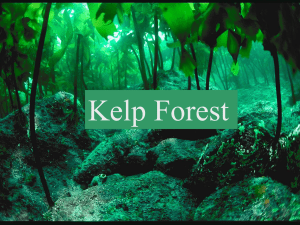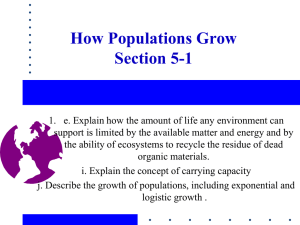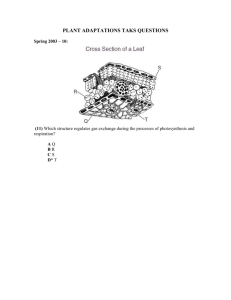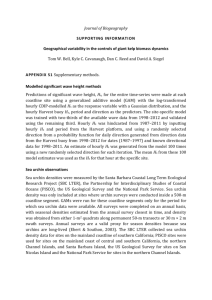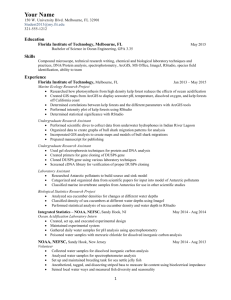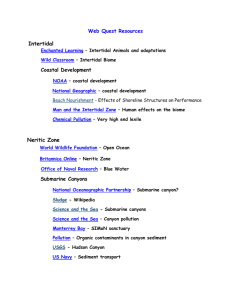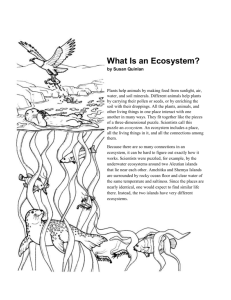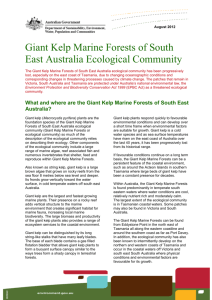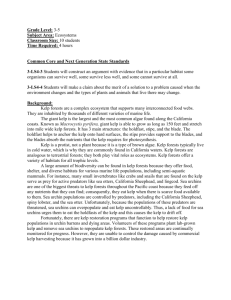Remote monitoring of giant kelp biomass and photosynthetic condition
advertisement
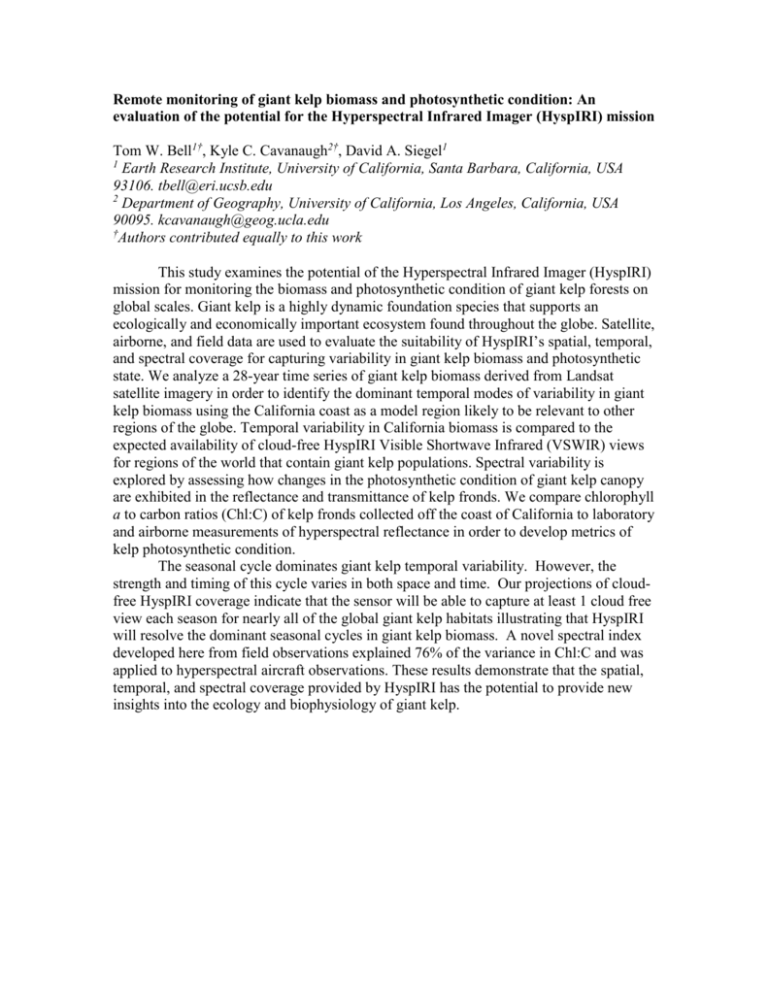
Remote monitoring of giant kelp biomass and photosynthetic condition: An evaluation of the potential for the Hyperspectral Infrared Imager (HyspIRI) mission Tom W. Bell1†, Kyle C. Cavanaugh2†, David A. Siegel1 1 Earth Research Institute, University of California, Santa Barbara, California, USA 93106. tbell@eri.ucsb.edu 2 Department of Geography, University of California, Los Angeles, California, USA 90095. kcavanaugh@geog.ucla.edu † Authors contributed equally to this work This study examines the potential of the Hyperspectral Infrared Imager (HyspIRI) mission for monitoring the biomass and photosynthetic condition of giant kelp forests on global scales. Giant kelp is a highly dynamic foundation species that supports an ecologically and economically important ecosystem found throughout the globe. Satellite, airborne, and field data are used to evaluate the suitability of HyspIRI’s spatial, temporal, and spectral coverage for capturing variability in giant kelp biomass and photosynthetic state. We analyze a 28-year time series of giant kelp biomass derived from Landsat satellite imagery in order to identify the dominant temporal modes of variability in giant kelp biomass using the California coast as a model region likely to be relevant to other regions of the globe. Temporal variability in California biomass is compared to the expected availability of cloud-free HyspIRI Visible Shortwave Infrared (VSWIR) views for regions of the world that contain giant kelp populations. Spectral variability is explored by assessing how changes in the photosynthetic condition of giant kelp canopy are exhibited in the reflectance and transmittance of kelp fronds. We compare chlorophyll a to carbon ratios (Chl:C) of kelp fronds collected off the coast of California to laboratory and airborne measurements of hyperspectral reflectance in order to develop metrics of kelp photosynthetic condition. The seasonal cycle dominates giant kelp temporal variability. However, the strength and timing of this cycle varies in both space and time. Our projections of cloudfree HyspIRI coverage indicate that the sensor will be able to capture at least 1 cloud free view each season for nearly all of the global giant kelp habitats illustrating that HyspIRI will resolve the dominant seasonal cycles in giant kelp biomass. A novel spectral index developed here from field observations explained 76% of the variance in Chl:C and was applied to hyperspectral aircraft observations. These results demonstrate that the spatial, temporal, and spectral coverage provided by HyspIRI has the potential to provide new insights into the ecology and biophysiology of giant kelp.

